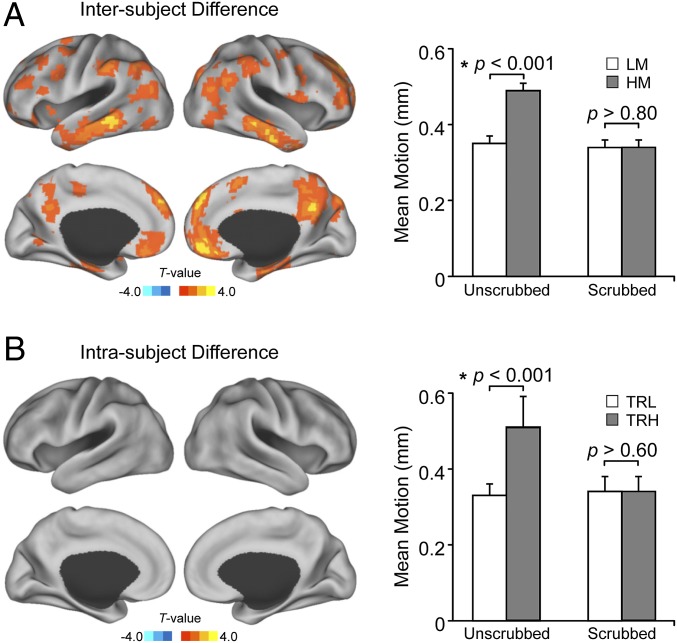Fig. 1.
Functional connectivity in a set of marker regions is a trait that predisposes to head motion but remains stable within subjects. (A) Distant connectivity in some cognitive regions (shown in red and yellow), mainly in the default network, was significantly greater in 26 subjects with low head motion than in 26 matched subjects with high motion (P < 0.05, FDR-corrected, two-tailed, two-sample t test). The motion level of the two groups was significantly different before data scrubbing (P < 0.001) but was the same after scrubbing (P > 0.80) (Right). (B) In an independent dataset of 26 subjects who exhibited a different level of sporadic head motion in two scanning sessions, no significant difference in distant connectivity was observed between the low-motion session and the high-motion session (no voxels reached the significance level of P < 0.05, FDR-corrected, two-tailed paired t test). The motion level of the two sessions was also significantly different before data scrubbing (P < 0.001) but was the same after scrubbing (P > 0.80) (Right). The motion level of this test–retest dataset was also matched to that of intersubject dataset (discovery sample). LM/HM, low-/high-motion individuals in the discovery sample; TRL/TRH, low-/high-motion sessions in the test–retest data.

